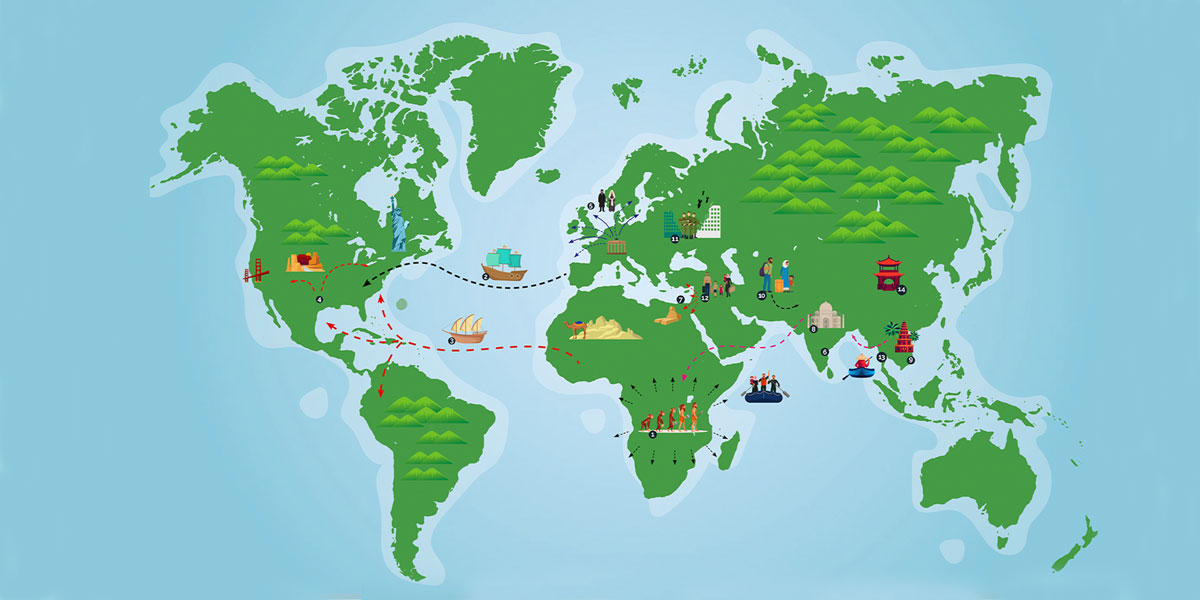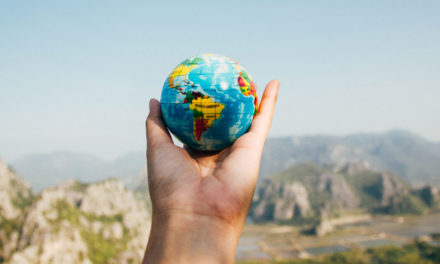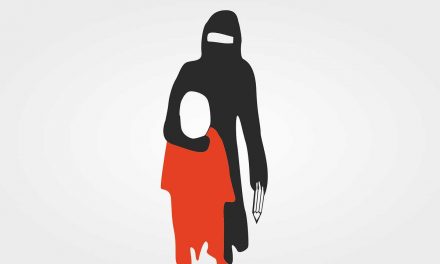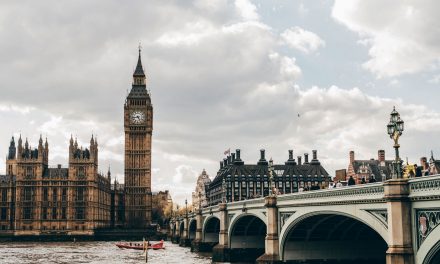Humanity has been migrating extensively throughout history. Human migration is the movement by people from one place to another, particularly to different countries, with the intention of settling temporarily or permanently in the new location. It typically involves movements over long distances and from one country or region to another.
Humanity on the Move: A Timeline of Global Migration
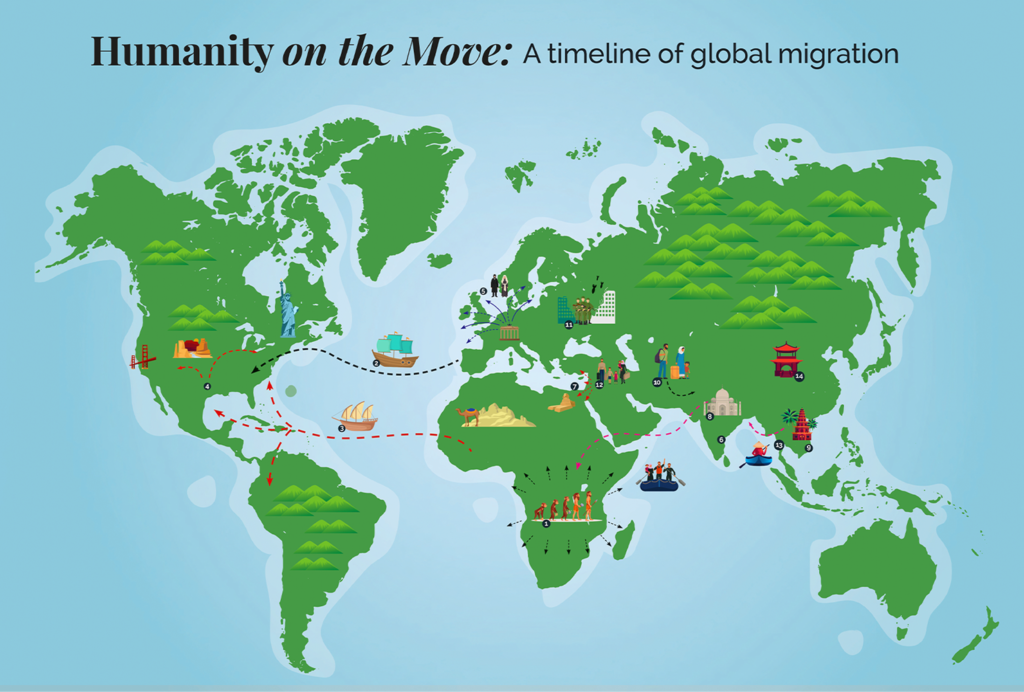
- The First Homo Sapiens Leave Africa | 60,000 years ago
Reports show that the first Homo sapiens began leaving Africa – where the human species first evolved – around 60,000 years ago. It is unclear what triggered this movement, but experts believe it could be linked to a change in climate, among several other factors. - The Colonisation of The Americas | 1492 to 1820
Between the periods of 1492 to 1820, around 2.6 million Europeans migrated to the Americas. Among the European nations to colonise the Americas were Britain, France, Spain, Portugal and the Netherlands. - Transatlantic Slave Trade | 1525 to 1866
According to estimates, around 12.5 million Africans were taken as slaves between 1525 and 1866 to the Caribbean, North America and South America. Only 10.7 million survived the treacherous journey. - A Race Fuelled Migration | 1916 to 1970
More than four million African Americans migrated from the South over a span of 30 years. A lack of jobs, opportunities, and an overall onslaught of racial discrimination and prejudice caused the migration to the Midwest and East Coast. - Displacement of Jews Before, During and After WWII | 1939
After Adolf Hitler came into power, Jewish people began leaving Germany and other Nazi-occupied countries in Europe. Bolivia welcomed 30,000 refugees while more than 60,000 German-Jewish people ed to Palestine in the 1930s. The UK and US also provided shelter to Jewish refugees. - The Partition of India | 1947
After Britain’s rule over India came to an end, the subcontinent was divided into two separate nations – Muslim-majority Pakistan and Hindu-majority India. While exact numbers are disputed, the partition displaced approximately 14 million people along religious lines. - The Creation of Isreal | 1948
After the creation of Israel in 1948, Palestinian people were subjected to ethnic cleansing and genocide, otherwise known as the Nakba. Israeli forces displaced at least 750,000 people but today, it is estimated that there are 7.2 million Palestinian refugees worldwide. - From India to Uganda to the UK | 1972
Thousands of Indians were brought to Africa in the 1890s to build the Uganda National Railway connecting its capital Kampala to Mombasa, Kenya. In 1972, because of Indophobia, Ugandan dictator Idi Amin gave his country’s minority Asian community 90 days to leave. Around 55,000 Ugandan-Asians were expelled and more than half settled in the UK. - Fleeing the Vietnam War | 1975
Large-scale migration to the US from Vietnam began at the end of the Vietnam War in 1975. As the humanitarian crisis in the region intensified and communism deepened, almost 125,000 Vietnamese refugees were admitted into the US. - Invasions and Civil Unrest in Afghanistan | Late 90s to Present
The Soviet invasion of Afghanistan in the late 90s was followed by a rise of extremism and civil unrest that eventually triggered a NATO intervention. The years of conflict led to Afghanistan having the world’s second-largest refugee population. According to the UNHCR, the country has about 2.6 million registered refugees. Close to 1.5 million Afghan refugees live in Pakistan. - The Yugoslav Wars | 1991 to 2001
The Yugoslav Wars were a series of ethnic conflicts and wars of independence and insurgencies fought in the former Yugoslavia from 1991 to 2001. This directed the breakup of the Yugoslav state into seven nations and displaced more than 4 million while killing over 140,000. - The Syrian Refugee Crisis | 2011
In April 2011, hundreds died in clashes between the Syrian Army and opposition forces. A human rights group estimated the death toll to be 511,000 from the start of the war until 2018. As of 2016, the UN estimates over 13.5 million Syrians displaced — the highest population of refugees worldwide. Approximately seven million are displaced internally, while others have sought refuge in Turkey, Lebanon, Jordan and Egypt. - Myanmar’s Rohingya Crisis | 2017
Since 2017, more than 740,000 people from Myanmar have ed across the border to Bangladesh due to extreme violence. Most of the refugees identify as Rohingya, a Muslim minority ethnic group in predominantly Buddhist Myanmar. Many Rohingya migrated near the border town of Cox’s Bazar, the world’s largest, most densely populated refugee camp. - China’s Floating Population | 2030
While it is often di cult to collect accurate statistical data on floating migrant populations, the number is undoubtedly quite large. According to the World Bank, by 2030, it is estimated that up to 70 per cent of the Chinese population will be living in cities. In 2020, China’s total population is to reach 1.5 billion.
This story first appeared in the 2021 print issue of Truly Belong under the title “Humanity on the move”.
Latest posts by trulybelongeditor (see all)
- St Kitts and Nevis: A Sanctuary for Security, Stability and Citizenship by Investment - 23rd March 2021
- A Timeline of Global Migration - 17th March 2021
- Dominica: A model for climate resiliency - 3rd March 2021

